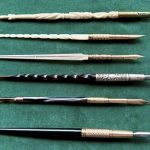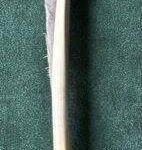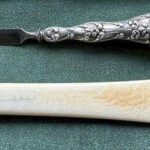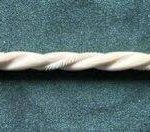Prior to the 19th century, there was a general state of illiteracy in society, with education confined to the upper classes.
Things changed in 1802, when England enacted the Factory Act, which compelled the owners of new factories to provide schools for the children of their workers. In 1840, the penny postage rate was adopted and, for the first time, members of the middle class were able to take advantage of their newly learned writing skills by sending letters to family and friends.
From the Dark Ages to the middle of the 19th century, the quill pen was used to record every work of religion, philosophy, science, medicine and law. The best quills for writing were taken from large birds that nested on the ground because their feathers were larger and stronger.
The most desirable were taken from geese, turkeys, ducks and swans. Feathers of the crow and raven were used for fine work, such as mapmaking and drawing. The delicate and fine lines they produced often were preferred by women.
It was the goose quill that dominated the writing market. The number of quill pens that were produced in the early 19th century were astounding. Germany used 50 million quill pens per year. In 1832, England was importing 36.6 million quills from abroad in addition to those produced domestically. The Bank of England alone used 1.5 million a year.
The major producers of quill pens were Poland and Russia. One goose could supply 10 to 12 good quills per year. They were harvested only at molting time because of animal-rights considerations.
Goose feathers were sold in 19 grades. Before the 1800s, the feathers were aged before cutting them into quills for writing. As demand increased, manufacturers developed a process to quickly clarify and temper the quills before shaping them.
A writer could go through five pens in a day. Prior to wearing out a quill, he would constantly rework the end to maintain the proper point. A small knife was used for this. It marks the origin of the pen knife.
Before 1850, the process for vulcanization of rubber had not been discovered, and the only way to correct a writing mistake was to scratch the ink off the paper with a small spade-shaped knife known as an erasing knife.
These still can be found in antique shops and are commonly misidentified as medical or veterinary bleeders. This knife also could be used for maintaining the point of a quill pen. The handle often was flattened to help smooth the fibers of the paper before applying ink again.
Joseph Gillott, an English inventor, developed a machine in 1831 to produce steel pen nibs which could be inserted into a wooden handle. By 1850, one of his factories alone was producing 180 million nibs per year. Making a steel nib for a pen required 14 operations from cutting the steel plate to completion.
Most shops in major cities carried hundreds of pen nibs, and most wholesalers offered as many as 400 styles.
A pen nib could be obtained with a steel, silver, gold or gunmetal-blue finish. The finish on a pen nib became a fashion statement.
As the quill pen evolved into the dip pen, the holders for the nibs became more elaborate. Women’s pens were less bulky than those used by men. Most of the finer examples had sterling silver or mother of pearl handles and gold tips. Men’s dip pens were oversized and generally had ebony handles. Many of the better models had retractable tips to keep them from catching on clothing and staining the things they touched.
In the late 1800s, glass pens were popular. The tip was cone shaped and fluted. As it was dipped into an ink well, it drew a large amount of ink up its surface. With a glass pen, one could write a paragraph or up to half a page without having to reload the tip. Conventional dip pens typically had to be reloaded with ink by the end of each sentence.
The fountain pen was invented in 1880 by an insurance salesman named Louis Edson Waterman. Before the invention of the typewriter, most legal documents had to be handwritten and took a long time to prepare.
Waterman had prepared an insurance document for a client. As it was being signed, a large drop of ink fell from the pen obscuring some of the important wording. Waterman asked for time to have the document rewritten, but the client could not wait and chose another salesman.
Waterman vowed to make a pen that would have its own ink supply so he would never lose a deal in this way again.
The first fountain pens were hollow bodied and were filled by using an eyedropper. As time passed, the mechanism for filling pens evolved, with the most common being a rubber bladder within the body of the pen that was filled by lifting a lever on the pen’s side. Only in recent years have we adopted using ink cartridges for fountain pens.



















